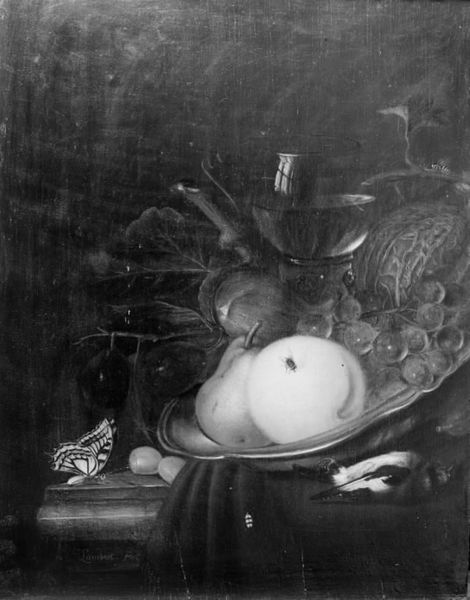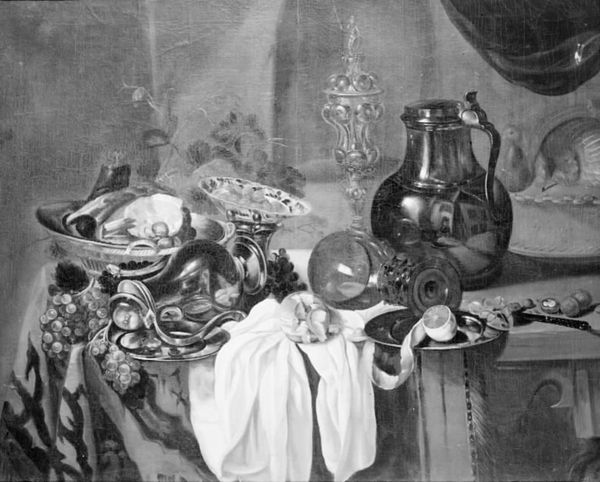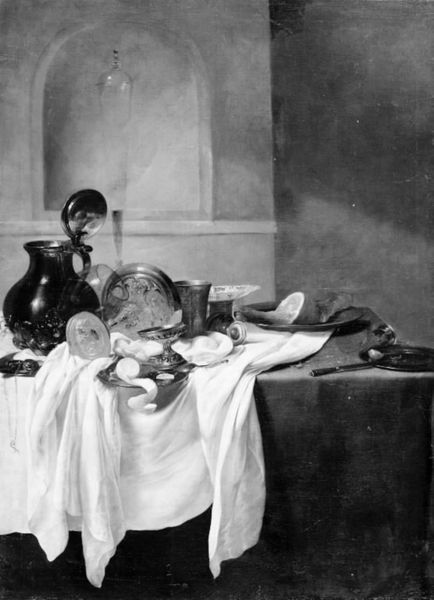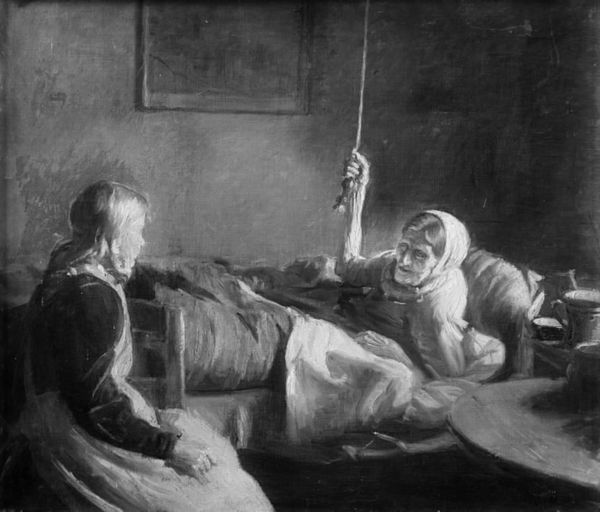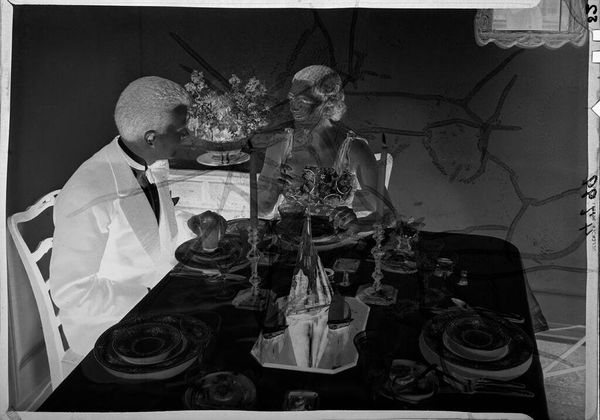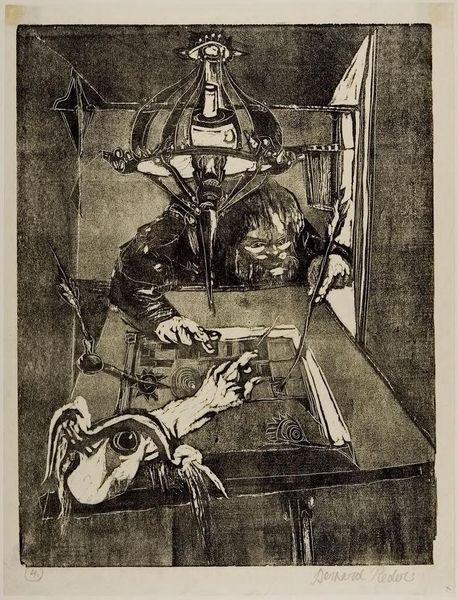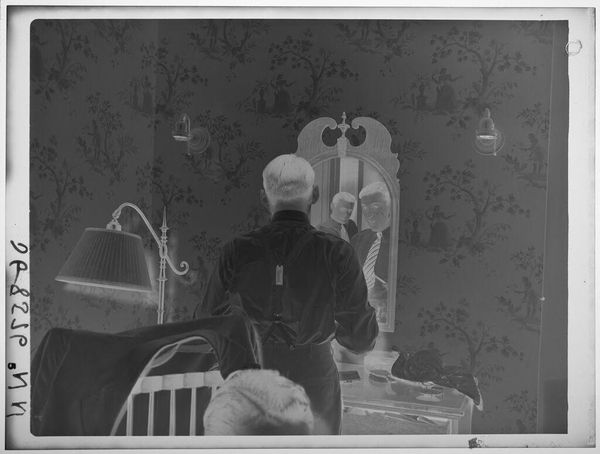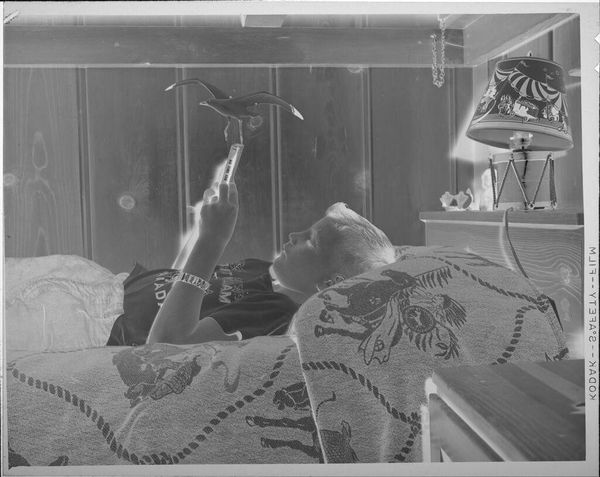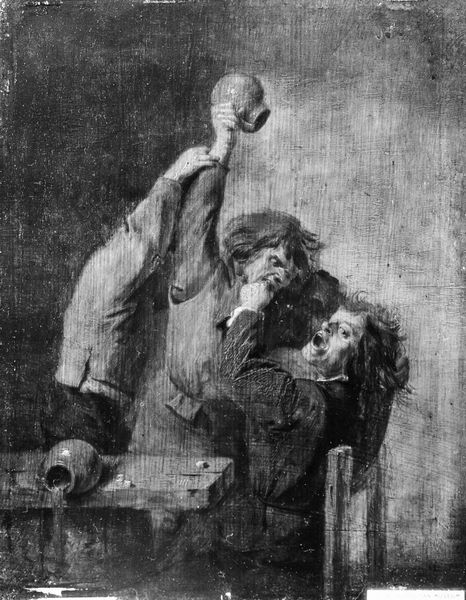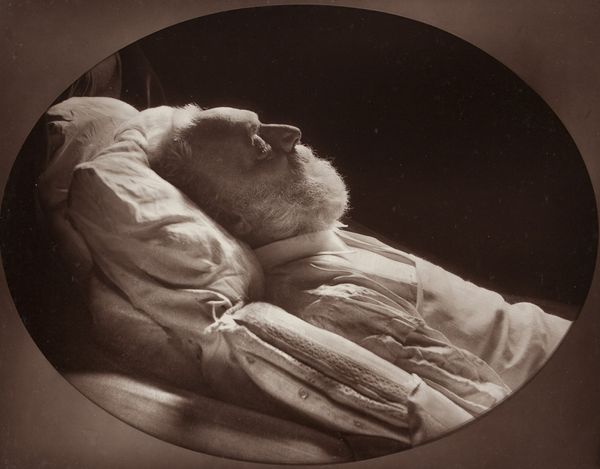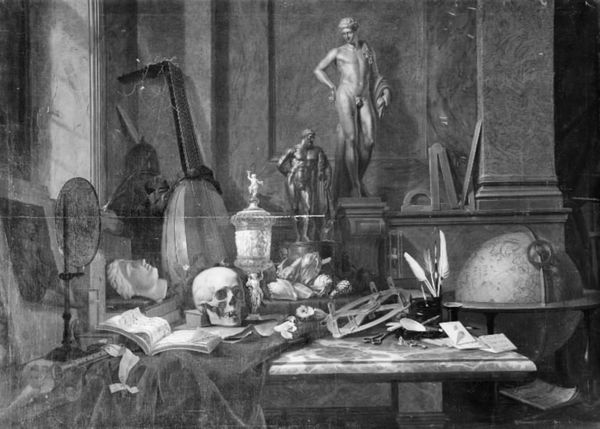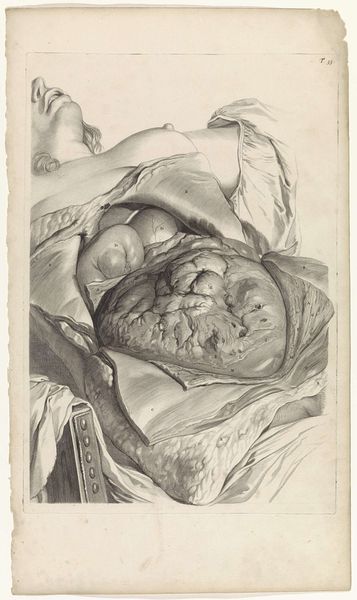
painting, oil-paint
#
baroque
#
painting
#
oil-paint
#
black and white
#
monochrome photography
#
monochrome
#
realism
#
monochrome
Dimensions: 58 cm (height) x 48.5 cm (width) (Netto)
Editor: This painting, simply titled "Still Life," was created in 1669 by A. Hase and is currently held at the SMK. It’s rendered in oil paint, though it almost appears to be a monochrome photograph at first glance! The composition feels very balanced. What catches your eye when you look at this work? Curator: The interplay of light and shadow is certainly striking. Observe how the artist uses chiaroscuro, a technique favored during the Baroque period, to create dramatic contrasts. Note the way the light selectively illuminates the objects – the fish on the platter, the loaf of bread, the edge of the glass – while the background recedes into near darkness. Editor: Yes, the dark background really makes the food pop out. Curator: Precisely. It is as though the artist’s main interest lies in a semiotic discourse of color and monochrome and in the objects depicted. The table covering’s textured drapery suggests implied lines leading our eye, from foreground up to the upper levels, and adding another dimension. The artist focuses primarily on this structural layering. Editor: So, by examining the structure, light, and texture, we can understand what interested the artist? Curator: In part, yes. Formally speaking, the use of monochrome might indicate the artist was more focused on pure form and tonal relationships rather than realistic colour representation, thus it focuses viewers' attention to the interplay of light and texture across varied surfaces. Hase leads the viewers to a greater comprehension and appreciation of intrinsic design elements through structured layout. Editor: I hadn’t considered the lack of color as a choice itself! This has given me a fresh way to appreciate still life paintings. Curator: Indeed, these visual qualities are where meaning resides, and their exploration provides significant avenues for understanding.
Comments
No comments
Be the first to comment and join the conversation on the ultimate creative platform.
